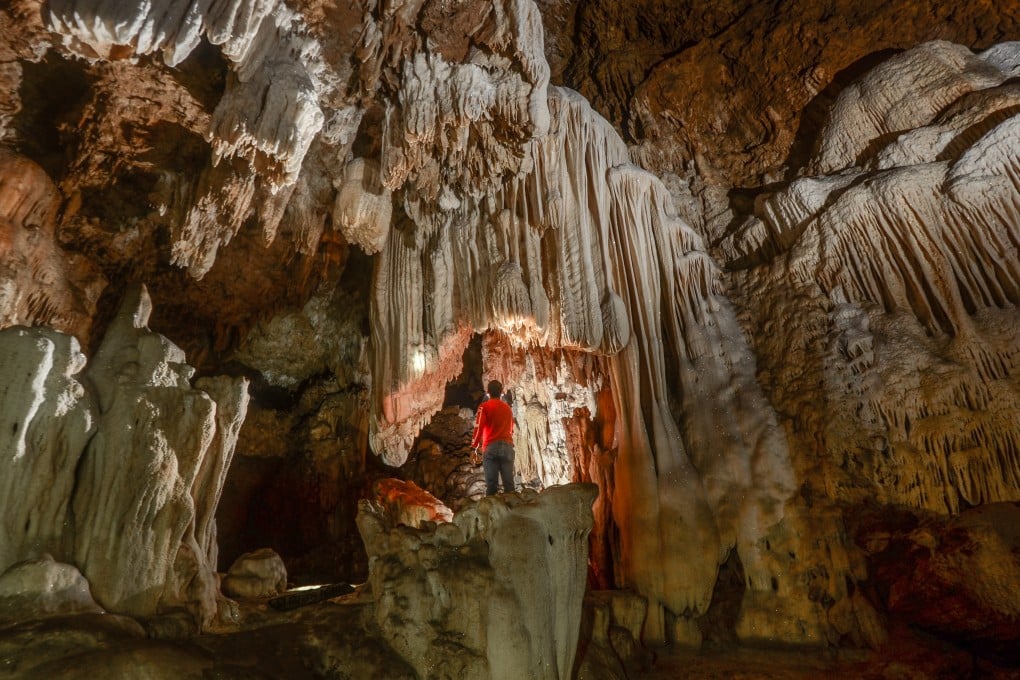How a Unesco Global Geopark in Indonesia could have been destroyed by mining – until locals realised their futures were better served by eco-tourism
- A local community in Sulawesi fought to reverse a decision to mine marble in the area they call Rammang-rammang. Now, it is a Unesco Global Geopark
- The geopark employs 200 residents in conservation, education, organic farming and developing local cuisine. Other residents sell snacks to tourists

It is the second-largest karst cluster in the world, a place of soaring limestone towers and pinnacles topped by rainforest and sluiced by gushing waterfalls.
Hidden within the karsts are 400 caves, “black boxes” of civilisation where archaeologists have found prehistoric jewellery, cutting tools, handprints and a painting of a half-human, half-animal figure estimated to be 44,000 years old – the oldest known painting in the world.
Inscribed in 2022, it is also one of the world’s newest Unesco Global Geoparks – 195 sites in 48 countries that have been given protection because of their spectacular geological heritage and beauty.
Set 43km (27 miles) north of the bustling port city of Makassar, on the Indonesian island of Sulawesi, its official name is Maros Pangkep Global Geopark, though locals call it Rammang-rammang, the word for “clouds” in the Makassar language; thick fog clouds the area at dawn and when it rains.

The story of how Rammang-rammang became an ecotourist attraction is a story of David and Goliath.